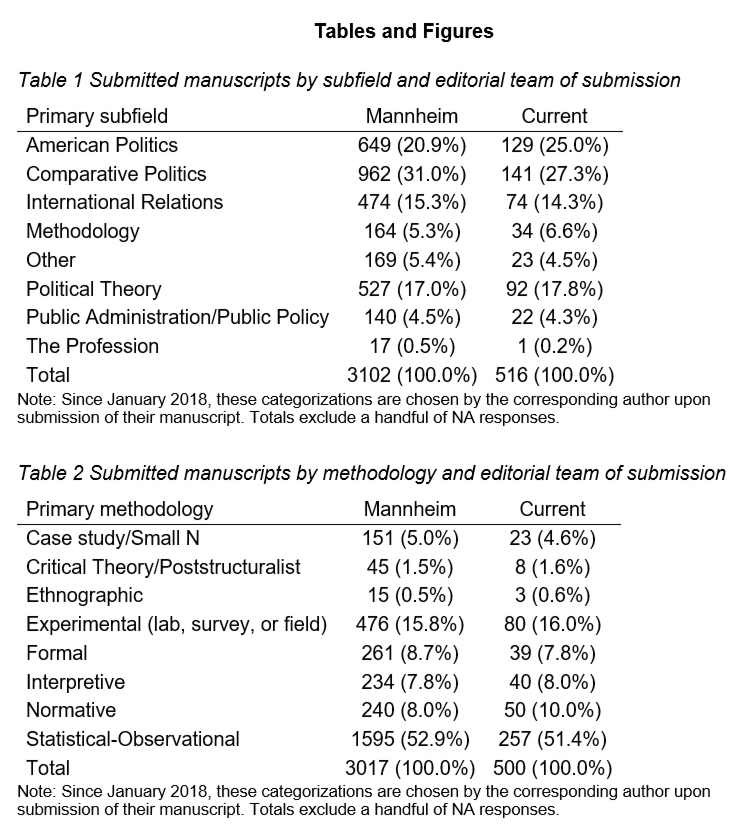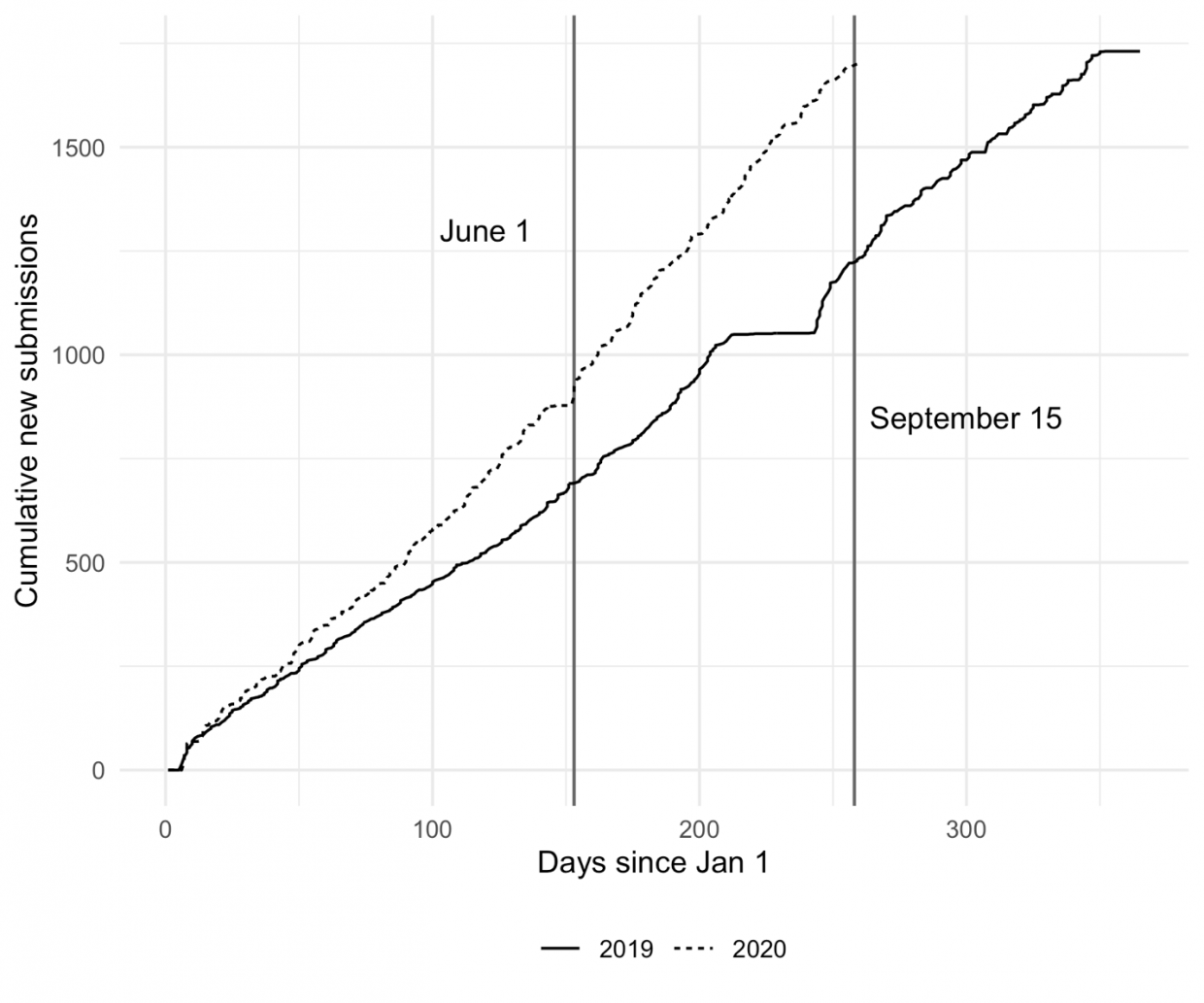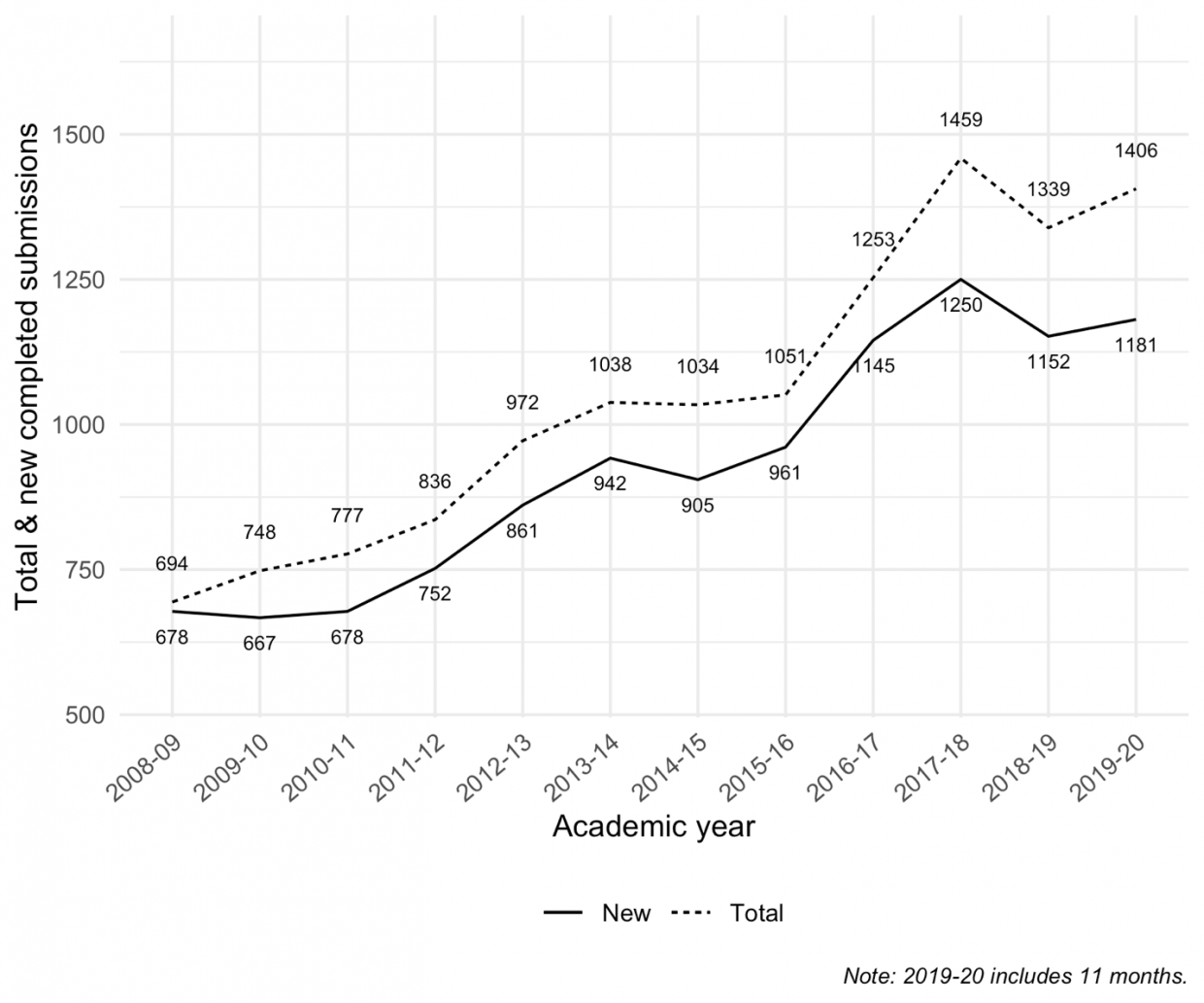APSR Editorial Report – Fall 2020
Prior to the beginning of our tenure, we set out a vision statement for the APSR revolving around six principles. One of these principles is editorial transparency, specifically as it refers to sharing with our community information about our editorial workflow and characteristics of our authors, reviewers, and readership during our tenure. Now that we have been at the helm of the APSR for a few months, it is our pleasure to share some of our early insights with you.
How We Work as a Team
Philosophically, our team’s approach is that every editor is an equal member. There is no single “lead” editor, and no one person defines the direction of the journal. Practically and logistically, however, our editorial structure ensures clean lines of responsibility and accountability for every task, and for handling every manuscript and inquiry. Specifically, we always have two designated co-lead editors who oversee the smooth running of the journal and to ensure that no manuscripts fall through the cracks, get forgotten, or get overly delayed if someone is sick or is otherwise unable to attend to their manuscripts. One of these leads changes every six months, and we hope that our overlapping terms will ensure continuity, while bringing fresh energy and new eyes to the lead position every six months.
Our team meets weekly to discuss, review, and confirm all final decisions on manuscripts, and we often confer at length on difficult decisions. In addition to ethics and appeal policies, our approach to desk reject decisions requires that at least two editors agree that a manuscript be desk rejected on ethical or substantive grounds. We have also established four committees and a series of special roles: Governance (which includes the two lead editors and one other editor), Data and Transparency (which includes our data wrangling editor), Ethics and Inclusion (which includes our ethics board liaison), and Communications and Outreach (which includes our social media editor). Every editor serves on at least one committee.
Submission Trends
Number of submissions: Overall, manuscript submissions to the APSR have continued to increase, both during the last year of the prior team (Figure 1) and the first few months of our team (Figure 2). Between June 1 and August 31, 2020, new submissions increased by 75% (457 manuscripts) compared to the same period in 2019 (261 manuscripts). The proportion of manuscripts submitted as letters, which are shorter manuscripts of no more than 4,000 words, also continues to increase since their introduction in 2016, and recently nearly 20% of all new submissions are letters.
COVID effects: There has been some public discussion on social media and elsewhere about the impact of the pandemic on productivity and submissions by women to journals. So far, our data do not suggest any obvious trends in this regard. We have noticed, however, an increasing share of potential referees declining review requests due to pandemic related disruptions, such as providing childcare. We will keep monitoring and report on these statistics in the future.
Turnaround times and decisions: In spite of continuing increases in submissions, and in spite the fact that we are new editors, so far, our turnaround times are comparable to those of the prior team. Our mean turnaround time for desk rejects is about 9 days, which is similar to that of recent teams (see Figure 3). Our policy of requiring two people to weigh in on desk rejects does not seem to have appreciably increased our turnaround time for desk rejects. Rates of desk rejection are also fairly similar to prior teams. Our desk reject rate is about 37%, compared to about 40% under the prior editorial team. The 63% of new submissions that have gone out for peer review are sent to reviewers an average of 9 days after the initial submission is complete. Of these, we have only received sufficient reviewer reports to make initial decisions for 152 manuscripts, resulting in 133 rejections and 19 invitations to revise and resubmit (12.5%). So far, our average decision times after peer-review are in line with those of recent years, although we do not have yet a lot of data for meaningful comparisons. Stay tuned for more updates!
Subfield and methodological approach: Since 2018, the APSA Council has asked APSR editorial teams to collect data from the corresponding author about the primary subfield and methodological approach of each manuscript. Through September 15, 2020, we have not seen meaningful shifts in the field (Table 1) or methodological approach (Table 2) of new submissions. One of our editorial team’s goals is to increase further the number and diversity of new submissions to the journal, including a commitment to diversify the subfields, geographic foci, and methodological approaches represented in the APSR. We have ample room in our page allocation to diversify our content, while still publishing the same amount of high-quality political science research for which the APSR is already known. We look forward to receiving manuscripts that help us achieve our goals.
These preliminary data show that we have some way to go to seeing more submissions about timely and timeless topics of particular political import on substantive topics and using methodological approaches that have previously been underrepresented in the pages of the APSR.
We cannot publish research that does not cross our desks, so please consider submitting your best work to the journal.

Figure 1: Total and new submissions, 2008-2020 academic years

Figure 2: Cumulative new submissions, 2019 and 2020

Figure 3: Turnaround to initial decision to desk reject or review









